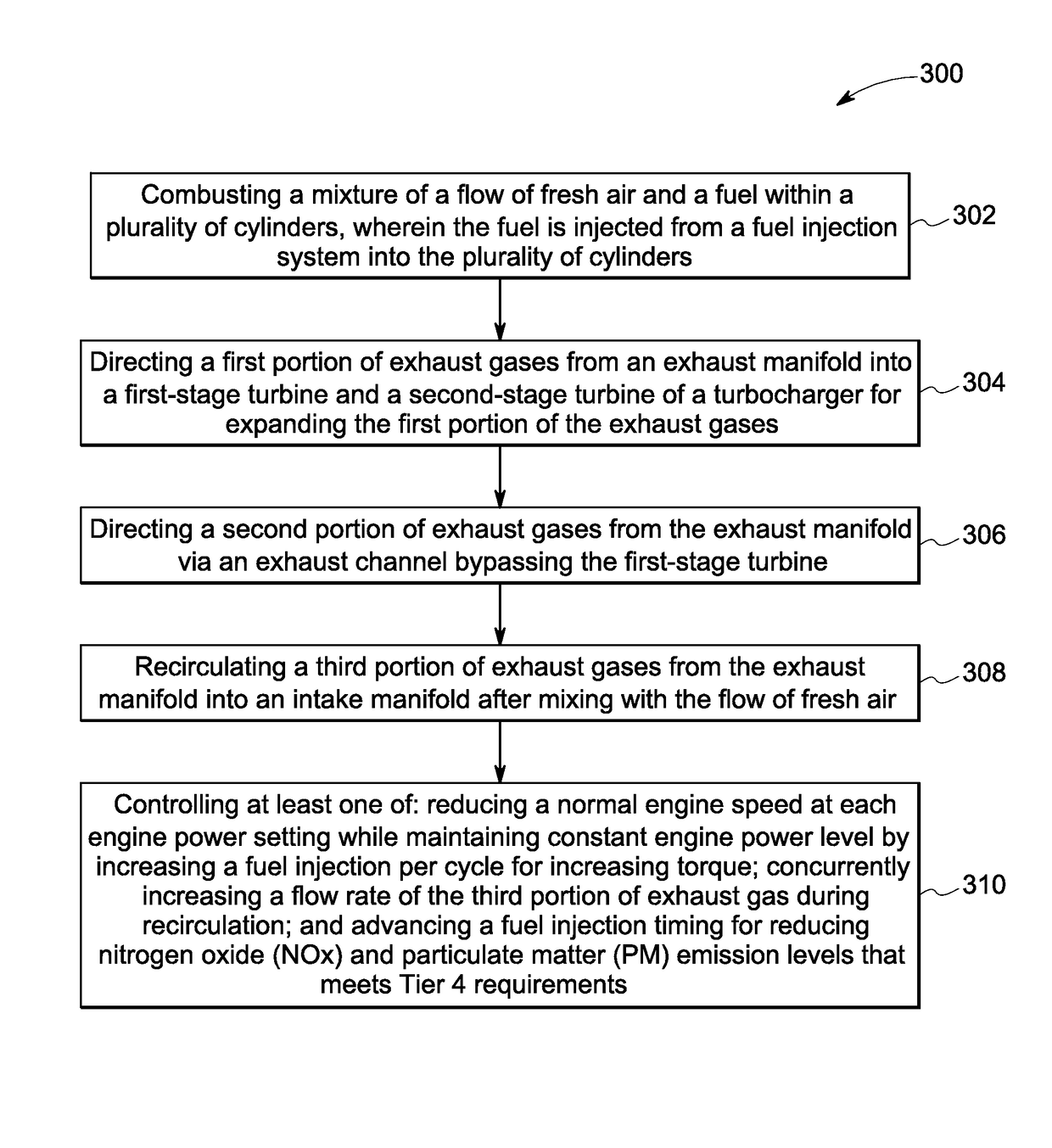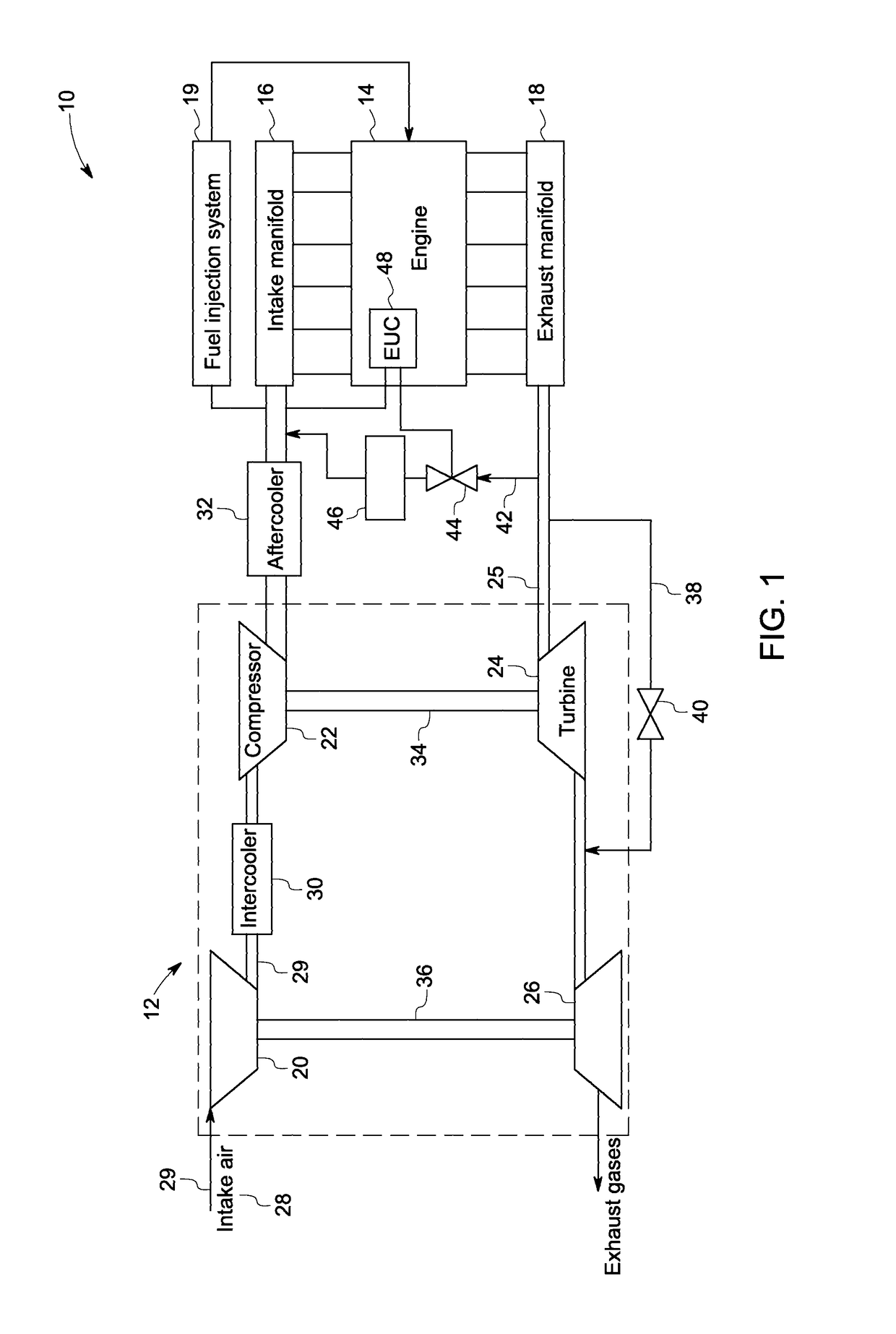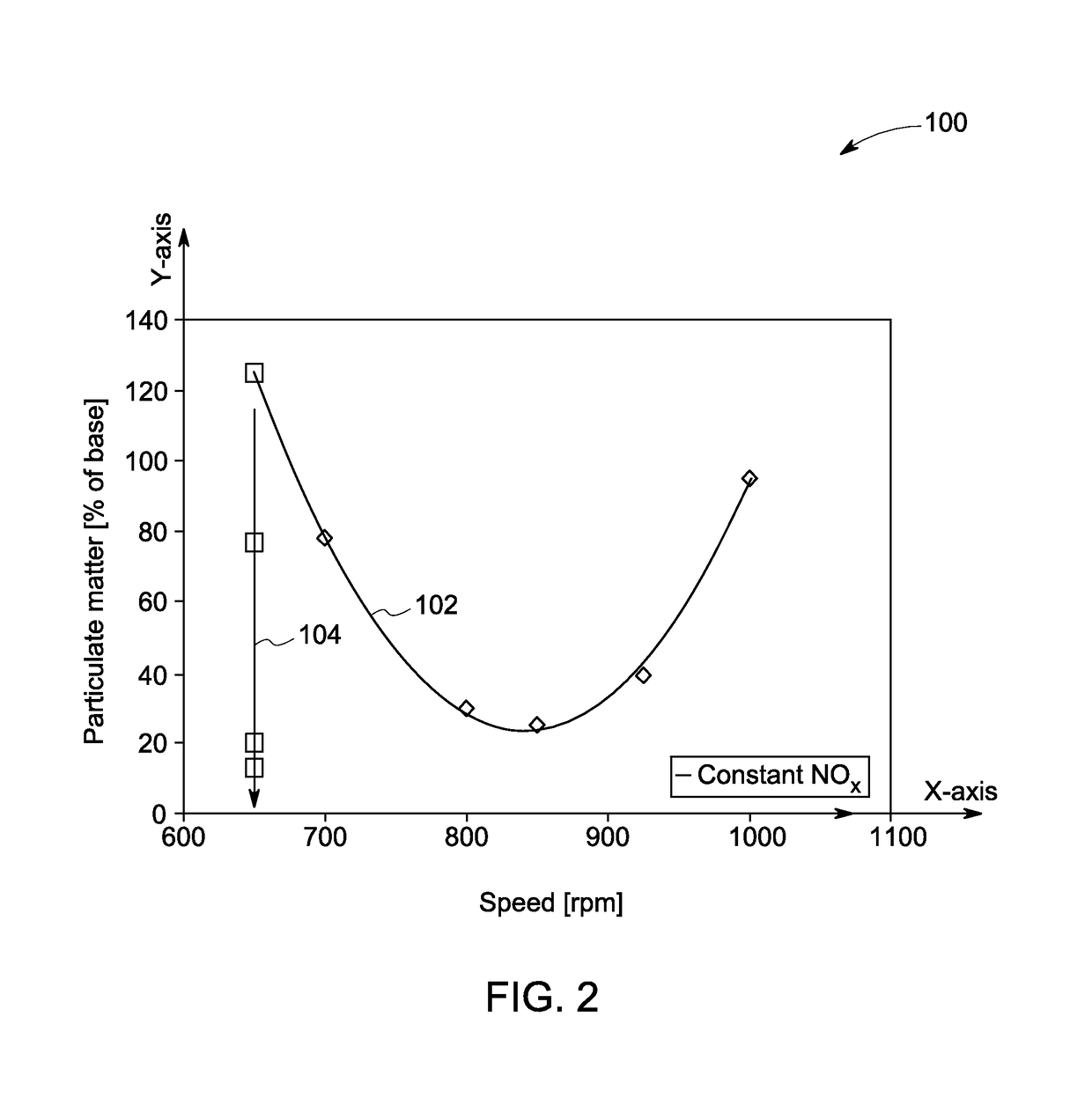System and method of operating an internal combustion engine
a technology of internal combustion engine and system, applied in the direction of machines/engines, electric control, speed sensing governors, etc., can solve the problems of high life cycle cost, increase the cost of manufacturing the engine, increase the cost of fuel consumption, etc., and achieve constant engine power level, increase the effect of fuel injection and reducing the normal engine speed
- Summary
- Abstract
- Description
- Claims
- Application Information
AI Technical Summary
Benefits of technology
Problems solved by technology
Method used
Image
Examples
Embodiment Construction
[0012]When introducing elements of various embodiments of the present invention, the articles “a,”“an,”“the,” and “said” are intended to mean that there are one or more of the elements. The terms “comprising,”“including,” and “having” are intended to be inclusive and mean that there may be additional elements other than the listed elements. Any examples of operating parameters are not exclusive of other parameters of the disclosed embodiments.
[0013]FIG. 1 is a schematic view of a system 10 having a turbocharger unit 12 in accordance with an embodiment of the present invention. The turbocharged unit 12 includes a two staged turbocharger and a compression-ignition engine, e.g., a diesel engine 14. In one embodiment, the system 10 may include a single staged turbocharger. The engine 14 includes a plurality of combustion cylinders. A piston (not shown) is slidably disposed in each cylinder and reciprocates between a top dead center and a bottom dead center position. It should be noted h...
PUM
 Login to View More
Login to View More Abstract
Description
Claims
Application Information
 Login to View More
Login to View More - R&D
- Intellectual Property
- Life Sciences
- Materials
- Tech Scout
- Unparalleled Data Quality
- Higher Quality Content
- 60% Fewer Hallucinations
Browse by: Latest US Patents, China's latest patents, Technical Efficacy Thesaurus, Application Domain, Technology Topic, Popular Technical Reports.
© 2025 PatSnap. All rights reserved.Legal|Privacy policy|Modern Slavery Act Transparency Statement|Sitemap|About US| Contact US: help@patsnap.com



